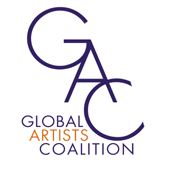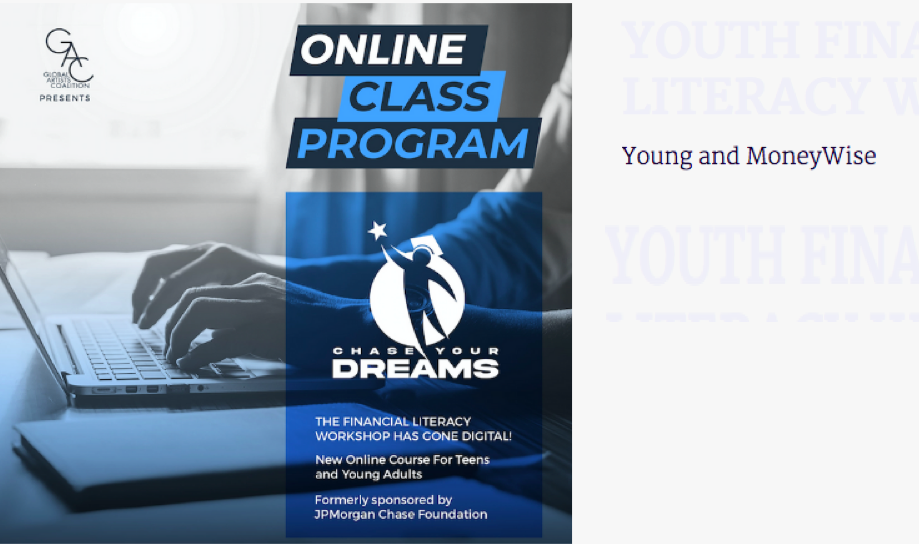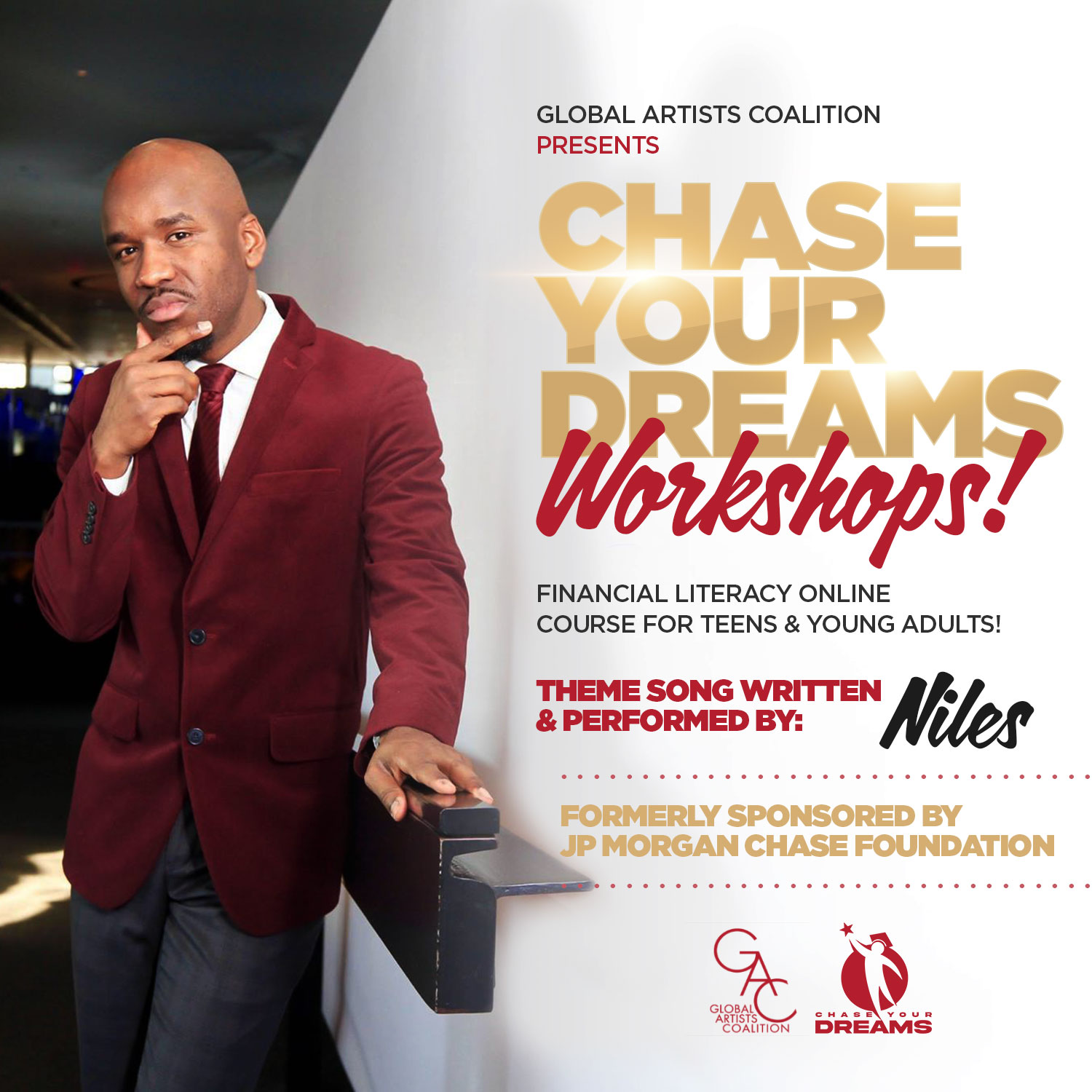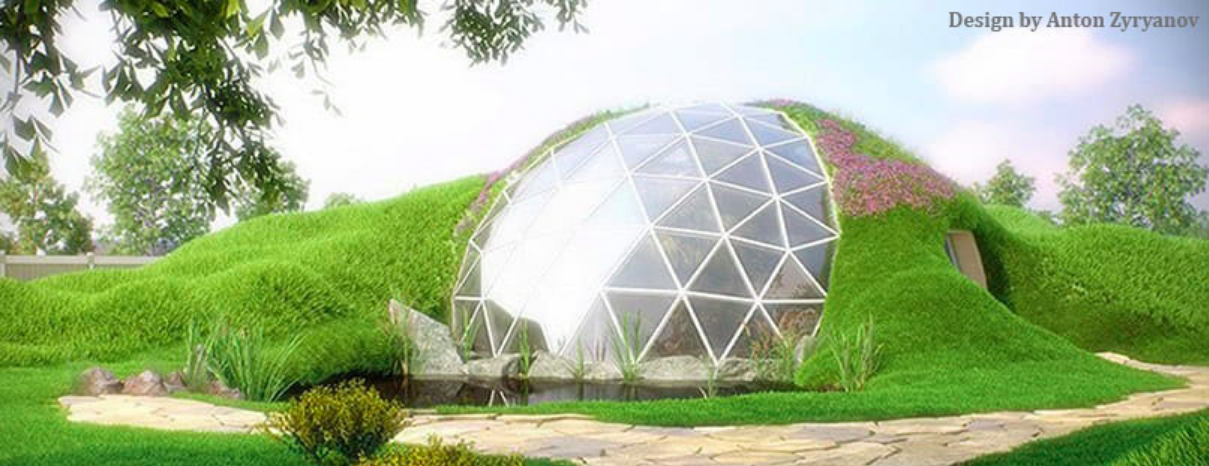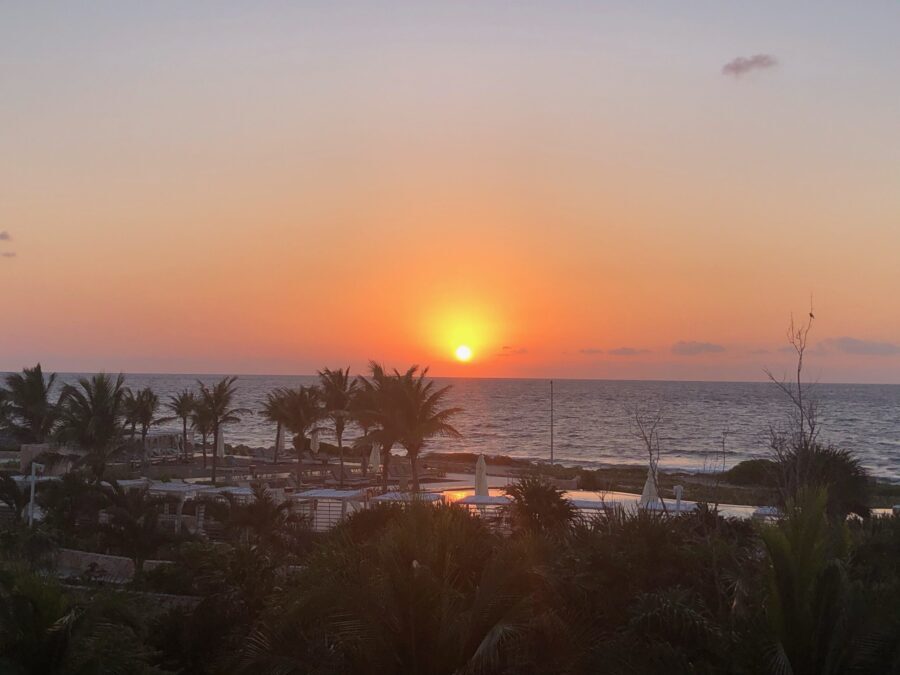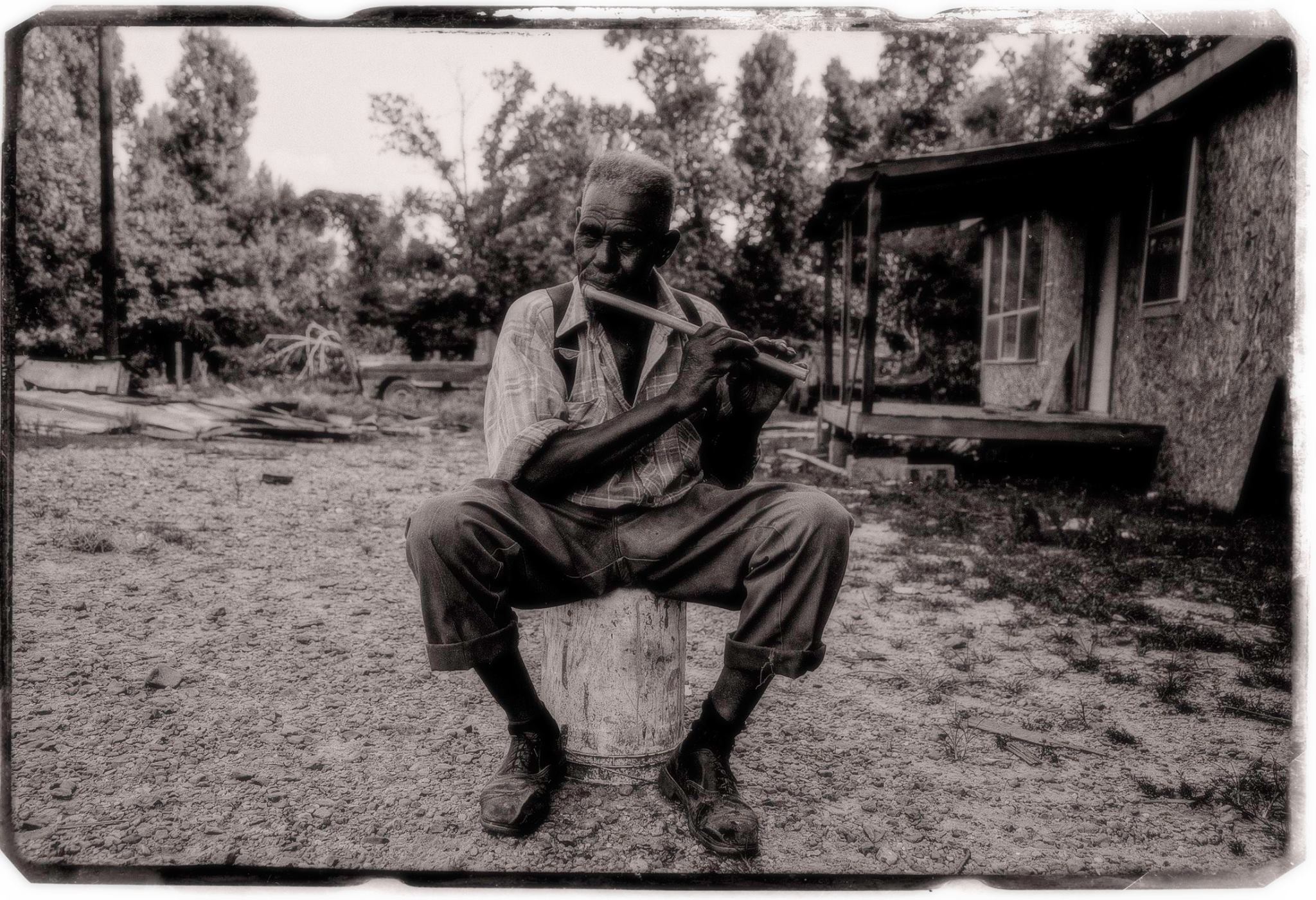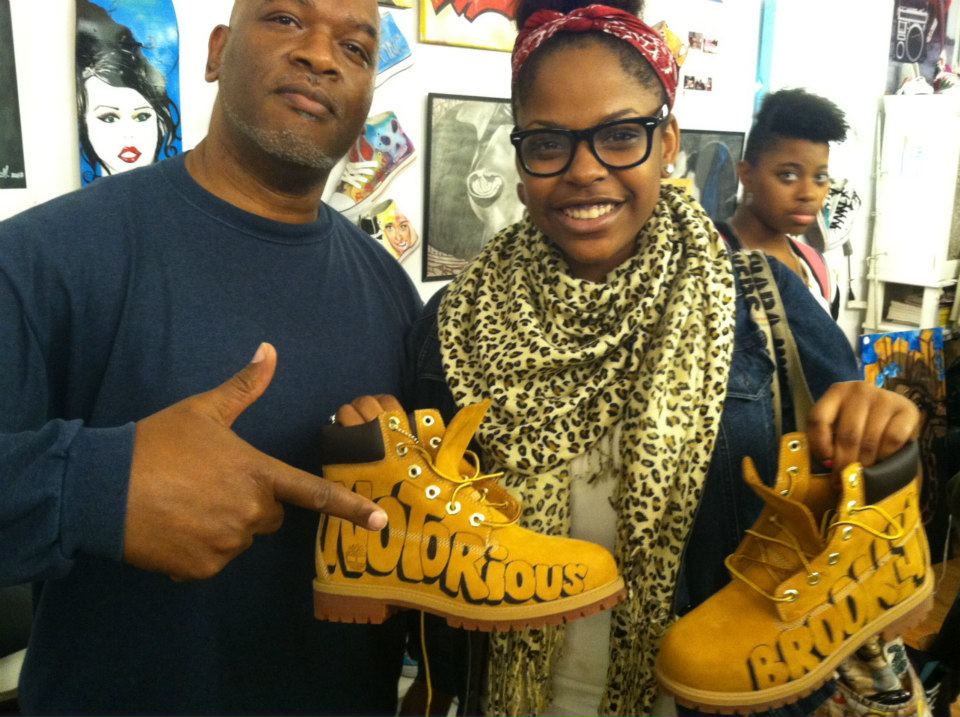The Ancient Art of Stonemasonry and Megalithic Construction
How on earth did ancient stonemasons carve out massive stone blocks from distant quarries, some weighing in excess of one thousand tons, then fit them together with perfect precision and astronomical accuracy?
The general consensus among archaeologists, Egyptologists and scientists is that megalithic structures were built using primitive tools and methods, at the behest of rulers worshipped as gods. The labor forces to quarry, transport and carve these stones unknown. The countless number of awe-inspiring ruins found all over the world, built with lost techniques and ages of stone unmeasurable.
The modern stonemason undergoes comprehensive training, both in the classroom and in the working environment. Hands-on skill is complemented by intimate knowledge of each stone type, its application and best uses, and how to work and fix each stone in place.
But there are realms of stonemasonry not taught in any classroom.
Here’s a list of twelve ancient megalithic achievements using mysterious stonemason techniques. These other-worldly feats of engineering and artistry provide telling clues about the mysterious art of ancient stonemasonry and construction.
12) Baalbek / Lebanon
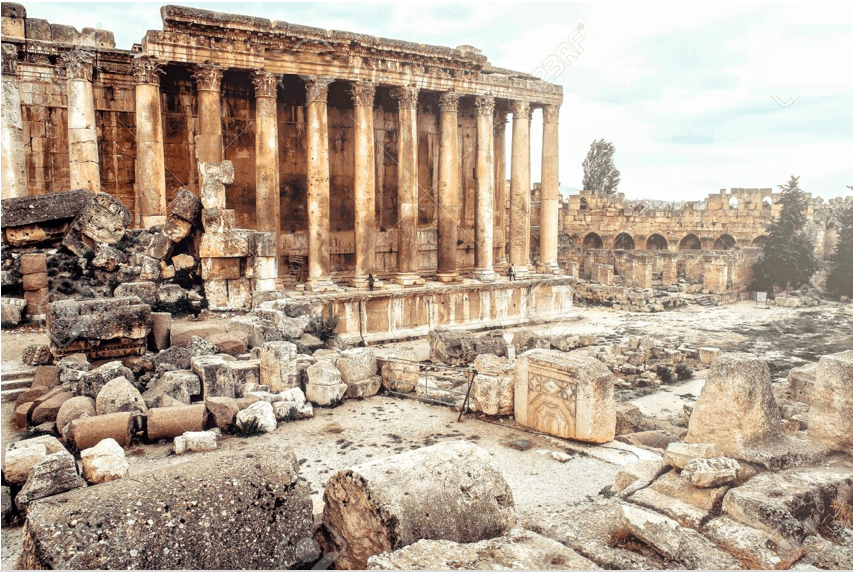
The ancient ruins of Baalbeck, located 53 miles northeast of Beirut is a megalithic site of mythical proportions. It claims many tantalizing origin stories, including one Islamic myth where Baalbek was a palace of King Solomon, built by jinn and given to the Queen of Sheba as a wedding present.
Western history proclaims that Baalbek came under Hellenic rule, following Alexander the Great’s conquest of Persia in the 330s BC and renamed Heliopolis. The true origin of Baalbek and its first stonemasons have been lost to time. It is often theorized, yet still unproven, that the foundation of the temple was constructed by Phoenicians.
Only one thing is certain: The larger areas of megalithic stone construction were built before Greek or Roman armies had arrived.
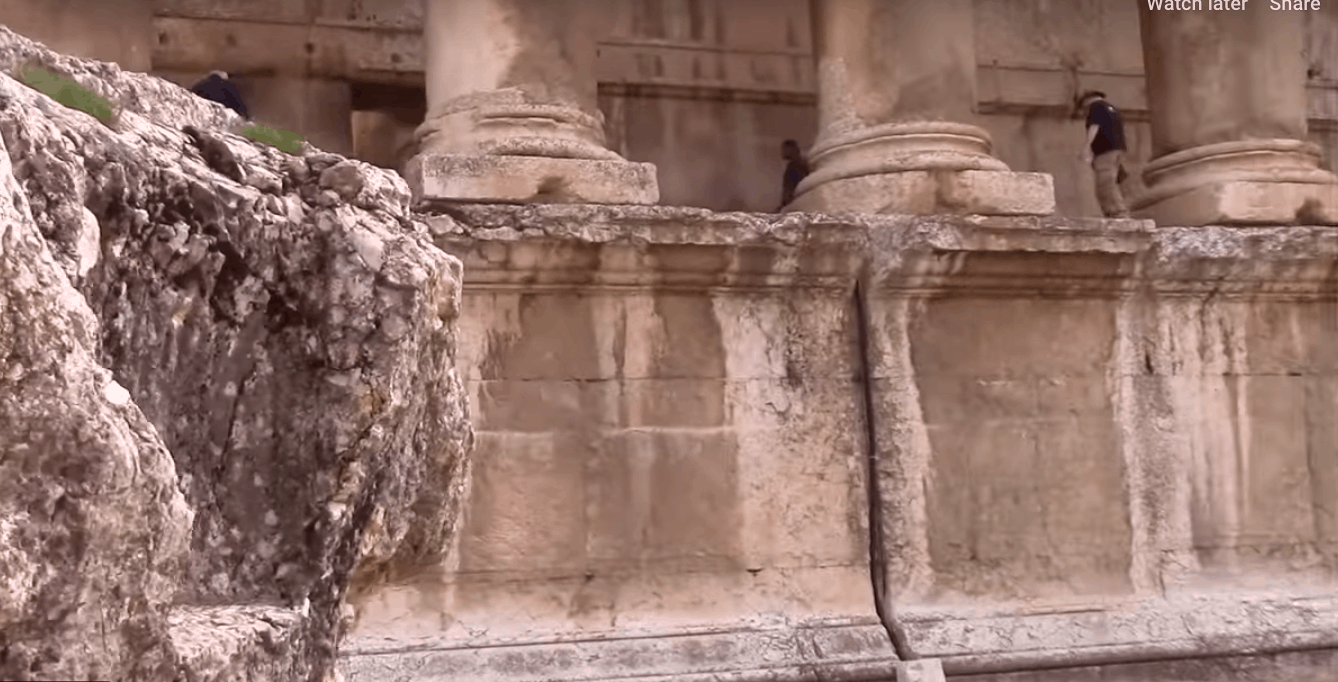
The complex is located on an immense raised plaza erected 16 ft over an earlier T-shaped base consisting of a podium, staircase, and foundation walls.
Through the foundation runs three enormous passages the size of railway tunnels.
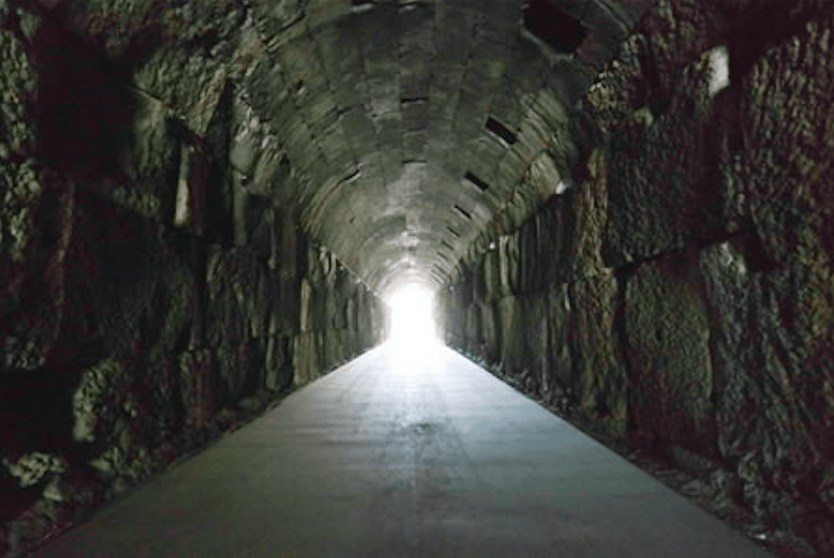
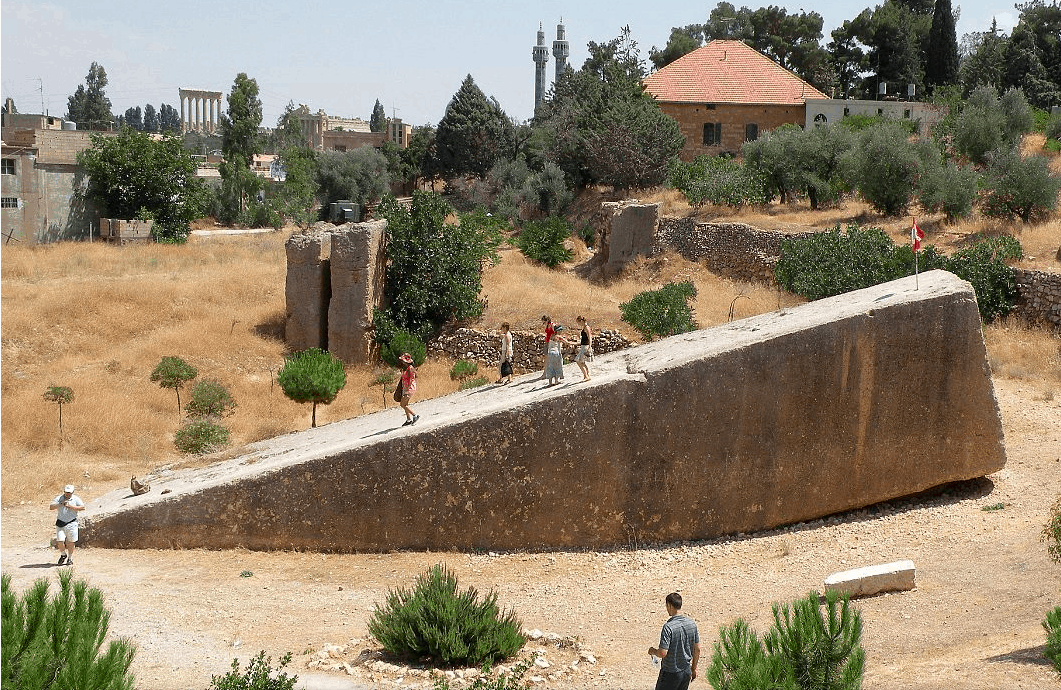
Other massive manmade blocks were found nearby, including one weighing up to 1,240 tons nicknamed, “The Stone of the Pregnant Woman.” The largest monolithic stone block in the world lies unused in a nearby quarry 800 m (2,600 ft) from town.
Recommended only for the fearless megalithic explorer, Baalbek has a population of approximately 82,608, mostly Shia Muslims, followed by Sunni Muslims and a minority of Christians. The area is a stronghold of the Iran-backed Shia Hezbollah militia.
11) Saksaywaman / Peru
On the northern outskirts of the city of Cusco in Peru lies the walled complex of irregularly shaped giant jigsaw blocks called Saksaywaman. These massive blocks of stone, some weighing more than 150 tons, were somehow transported to an elevation of 12,000 ft. high in the Andes mountains, from quarries many miles away.
How were these hundred-ton boulders cut and fitted? How were they raised into place?

The stones are spaced so closely a single sheet of paper will not fit between them. The technical achievement still puzzles modern scientists.
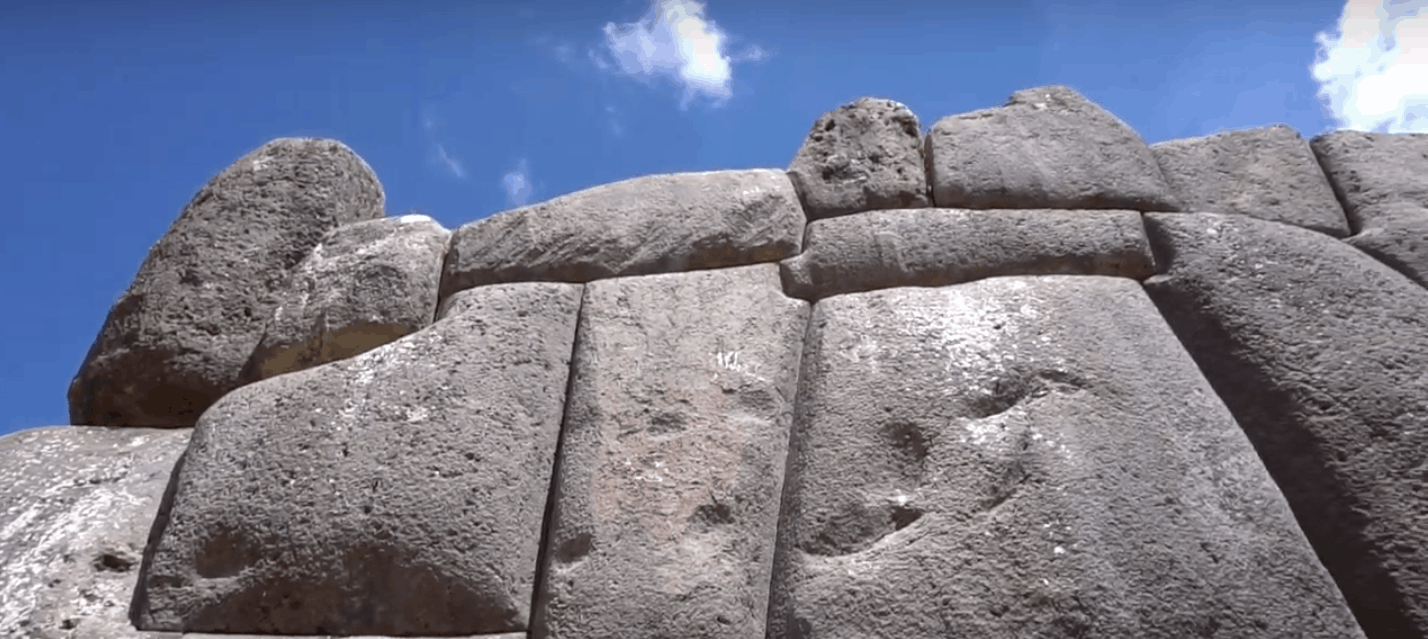
This type of stonemasonry not only exists in South America. Megalithic walls made with other-worldly techniques are found all over the world, including Italy, Easter Island, Egypt, Jerusalem, Malta, Greece, Japan, to name a few.
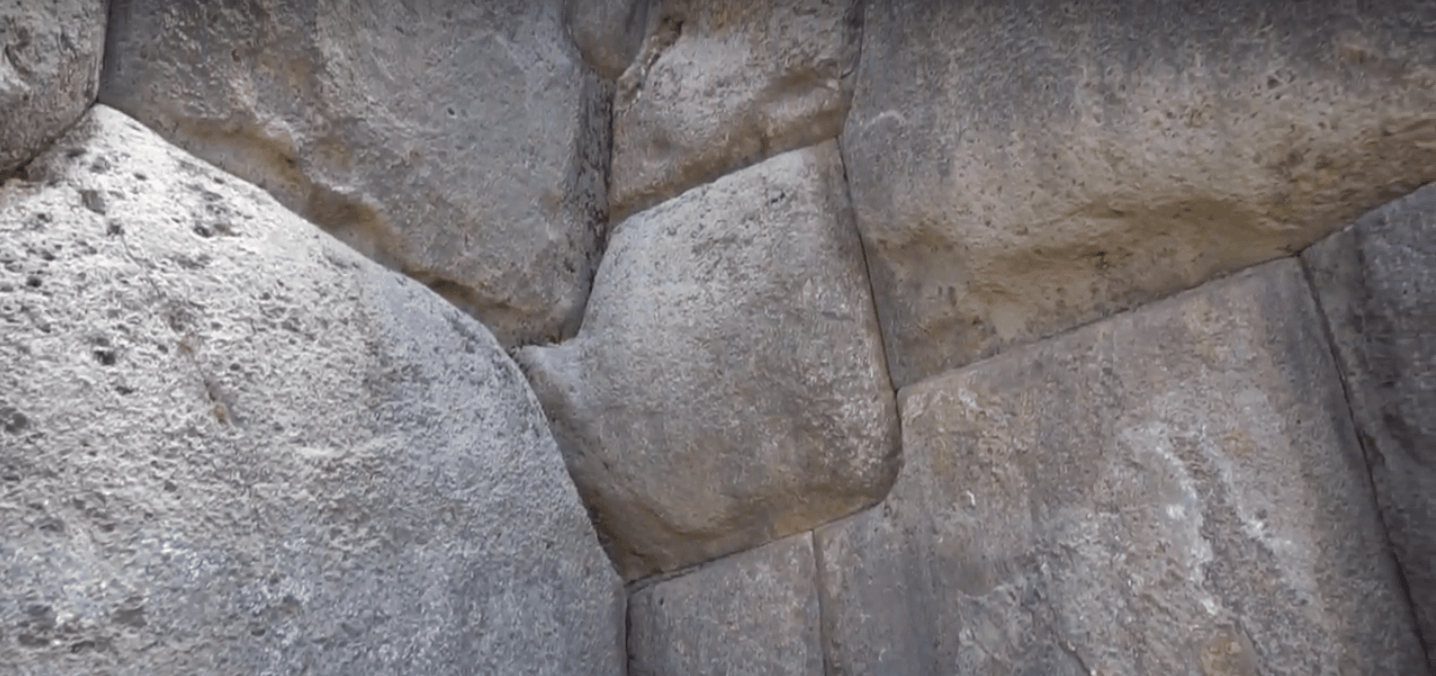
The standard spaced out explanation is that the Inca used a “guess and check” method of chipping at the stone with stone tools, then setting the stone in place, seeing how it fit, then lifting it up and chipping further if it didn’t fit, then checking again, and so on.
Setting the blocks presents an obvious challenge. The stones are massive, with many weighing several hundred tons, so moving and fitting needs to be an efficient and simple process to be worthwhile. Second, the Inca apparently did not tell the Spanish conquistadores the tale about guess and check stonemasonry, instead acknowledging the megalithic walls were there before they arrived. Others claim Saksaywaman was the work of an earlier Killke culture.
Soft Rock is easy listening…
Below is an up-close view of a wall block inside Cuzco City. The stones are smoothly finished, but for some reasons the stonemason was either unable to remove the stubs, or chose not to.
Was it some form of Leakage? Or, the result of a chemical process occurring inside the granite clay?
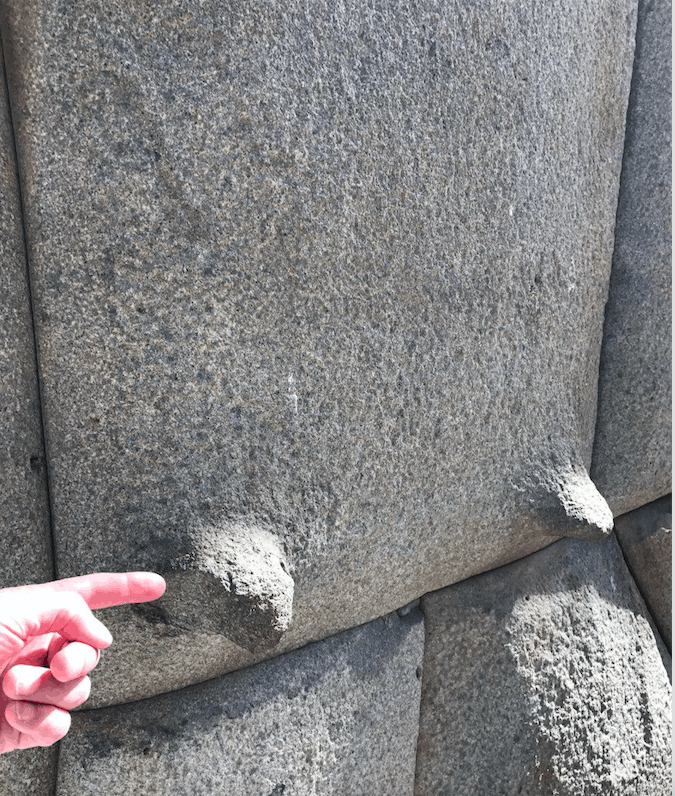
Local legends describe how ancient stonemasons possessed a plant-based liquid with magical powers – a plant that had either disappeared or was still waiting to be rediscovered. The British explorer Percy Fawcett, while searching South America for the lost city of Z, and Hiram Bingham, who rediscovered Machu Picchu, were both told of a mysterious liquid derived from plants.
Fawcett spoke about this strange plant that softens rock in his journals:
“I have heard it said that they fitted their stones together by means of a liquid that softened the surfaces to be joined to the consistency of clay.” Unfortunately, Fawcett vanished in the jungle, never to be found.
Here’s a more recent claim on Graham Hancock’s Forum:
“In Peru, above 4500 m, there is said to be a plant called kechuca which turns stone to jelly, and which the jakkacllopito bird uses to make its nest. A plant with similar properties that grows at even higher altitudes is known, among other things, as punco-punco; this may be Ephedra andina, which the Mapuche consider a medicinal plant.”

Plasticity is the ability of certain solids to flow or to change shape permanently when subjected to stresses such as heat or chemicals. Plasticity is observed in a range of materials, including metals, soils, rocks, concrete, foams, bone, and more.
Were the stones at Saksaywaman soft and moldable at the moment of construction?
Behind the stone quarry at Saksaywaman, sheets of petrified stone ooze serve as joyrides for tourists. Was there a time in pre-history when ancient stonemasons had access to a liquefied granite rock?

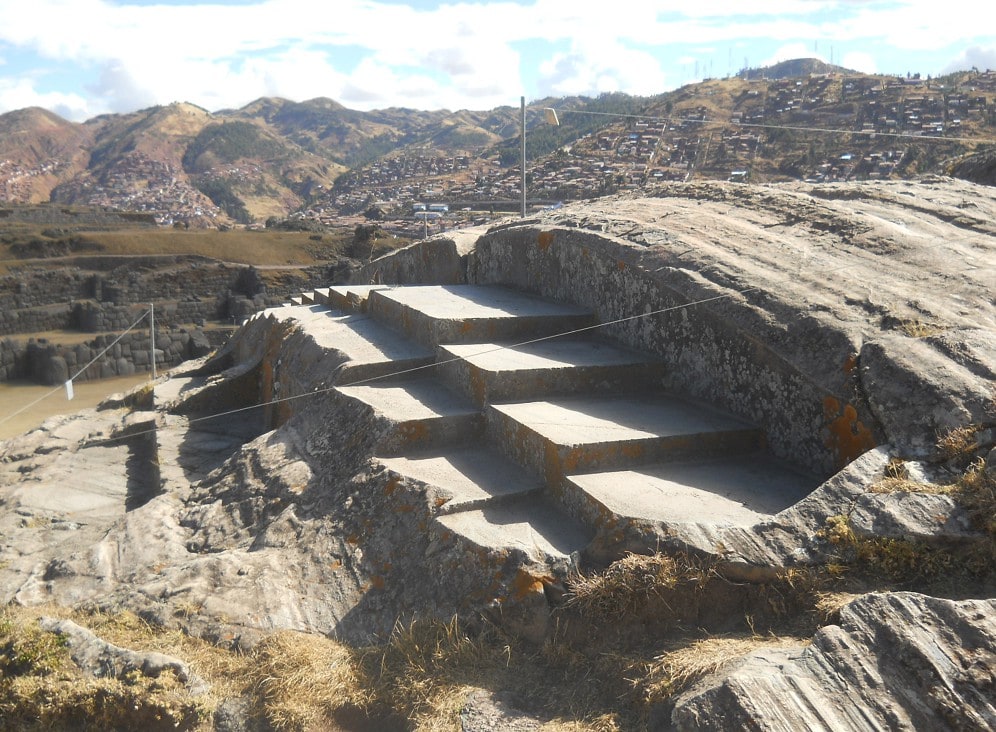
Is this a 250 Million-year-old Human Footprint?

How is it possible that a man’s footprint was captured in the Permian strata, which according to scholars, dates from 290 to 248 million years ago – a time long before man or even dinosaurs existed on earth? The history books on earth and man will have to be rewritten.
Or, could there be another explanation? Did this man step on some kind of granite-clay that at the time was still soft and moldable? A state of granite plasticity not observed today?
It is time to question everything we think we know.
The builders of ancient Egypt appeared to be well versed in the type of rock quarries and machine tools we use today – including building stone, drills, circular saws, lathes, polishers and more – apparently all without electric power!

The marks left by unknown tools have, so far, been inconclusive. To date, no surviving examples of the actual tools used have been found. Neither have any written or pictorial records been found that mention or describes their use.
10) The Great Pyramid of Giza / The Great Sphinx
 The Great Pyramid contains an estimated 2.3 million blocks of stone, each block weighing approximately 2267.96 kilograms or 2.5 tons. One can only guess how the stones were transported from Aswan quarry, lifted and positioned into place.
The Great Pyramid contains an estimated 2.3 million blocks of stone, each block weighing approximately 2267.96 kilograms or 2.5 tons. One can only guess how the stones were transported from Aswan quarry, lifted and positioned into place.
Another surprising fact is that the Great pyramid is located at the exact center of the earth’s landmass. How ancient stonemasons were able to embed sacred geometry and astronomical symmetry into pyramid construction remains unsolved.
The Great Sphinx is one of the world’s largest and oldest megaliths. Many facts are still subject to debate, including when it was built, by whom and for what purpose. It does not appear in any known inscription of Egypt’s Old Kingdom and there are no inscriptions anywhere describing its construction or original purpose.
9) Cleopatra’s Needle / New York City
Located in New York’s Central Park behind the Metropolitan Museum of Art, Cleopatra’s Needle is the only ancient Egyptian Obelisk in the United States. One of of three Ancient Egyptian obelisks re-erected in London, Paris, and New York City during the nineteenth century.
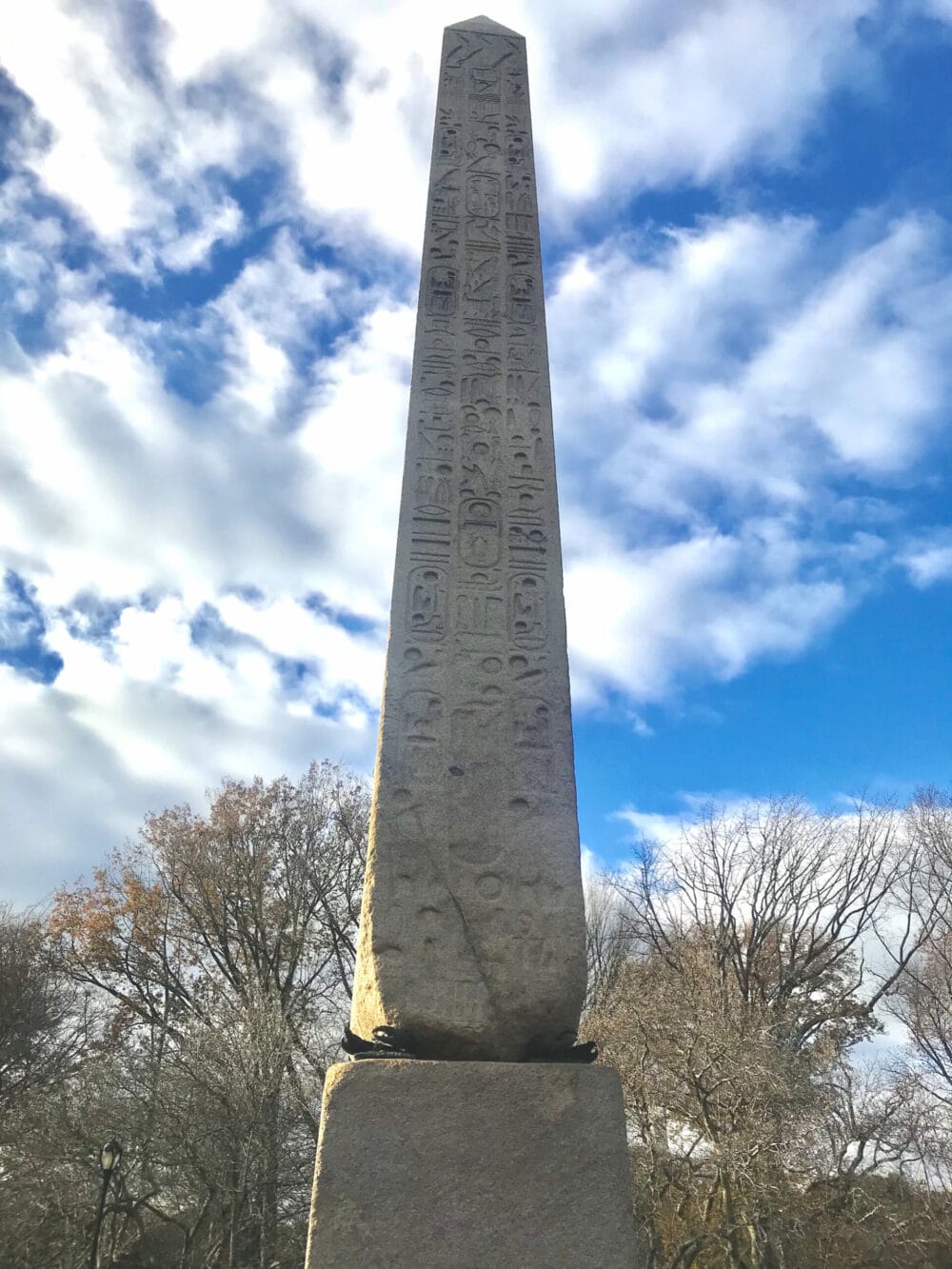
This tapered stone pillar with a squared cross-section was quarried from granite near the banks of the Nile in the region of Aswan. The obelisk was originally erected in the Egyptian city of Heliopolis on the orders of Thutmose III, around 1450 BC.
Inscriptions were added around 200 years later by Ramesses II to commemorate his military victories. It was later moved to Alexandria and set up in the Caesareum, a temple built by Cleopatra in honor of Mark Anthony or Julius Caesar by the Romans in 12 BC, during the reign of Augustus.
Today, artisans that carve out inscriptions and gravestones are called memorial- or monumental masons .
It is not known what technique was employed for carving the granite from the quarry bed-rock, and no scientific explanation has ever been published for the very unusual regularly-spaced “scallop” cuts that appear on its surfaces. Yet, the unproven statement that obelisks were “pounded out” using small balls of diorite is still frequently repeated.
For those that claim prehistoric man used primitive means to erect these massive megalithic sites, there is one contemporary megalithic structure near Miami, Florida that goes against those theories.
8) Coral Castle / Homestead, Florida

Beginning in 1920, Edward Leedskalnin, a 5-ft. tall, 100-lb. Latvian immigrant manage to single-handedly quarry, fashion, transport and construct a megalithic park in Homestead, Florida now called Coral Castle.
Over a 20 year period, it is estimated that 1,000 tons of coral rock were used in the construction of the walls and towers, and an additional 100 tons were carved into furniture and art objects. The largest rock on the property weighs an estimated 35 tons with some stones twice the weight of the largest blocks in the Great Pyramid at Giza.
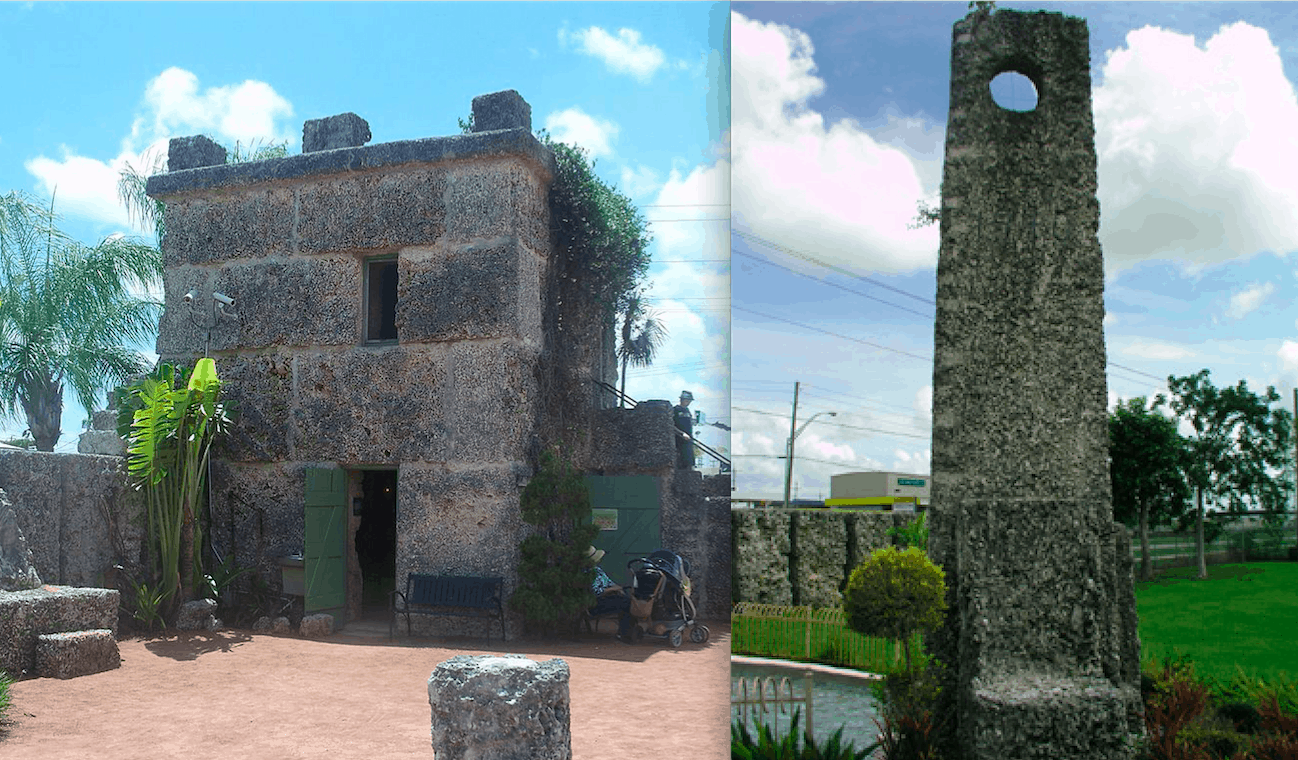
No one ever witnessed how Leedskalnin was able to move and lift such enormous objects, although it is claimed that some spying teenagers saw him “float coral blocks through the air like hydrogen balloons.”
Evidence suggests science has moved a step closer to industrial levitation.
Leedskalnin apparently not only understood how to cut and move enormous coral blocks, but he also understood engineering, allowing him to place a 20 ton piece of coral in the ground so perfectly you can see the star Polaris.
He was also obsessed with electromagnetism, evidenced by his published pamphlets and his famous Flywheel in the Tool Room. There are even rumors that he knew Nikola Tesla during his time in Homestead, Florida and a reason he became obsessed with electromagnetism.

Edward Leedskalnin claimed he knew the secrets of the pyramid builders and it apparently did not require modern machinery or thousands of workers, saying at one point,
“I have discovered the secrets of the pyramids. I have found out how the Egyptians and the ancient builders in Peru, Yucatan, and Asia, with only primitive tools, raised and set in place blocks of stone weighing many tons.”
If Leedskalnin had indeed rediscovered the ancient secrets of levitation, he took the details of those secrets to his grave.
7) Stone spheres / Costa Rica
Deep in the jungles of Costa Rica are a collection of some three hundred polished stone orbs revered for there spectacular artisanship and beautiful simplicity. Originally discovered in the Diquis Delta of Costa Rica during the 1930s, the spheres range in size from a few centimeters to over two meters in diameter and weigh up to 16 tons.
Most are made of an igneous rock called gabbro, a type of basalt, and others are made of sedimentary rock, including limestone and sandstone.
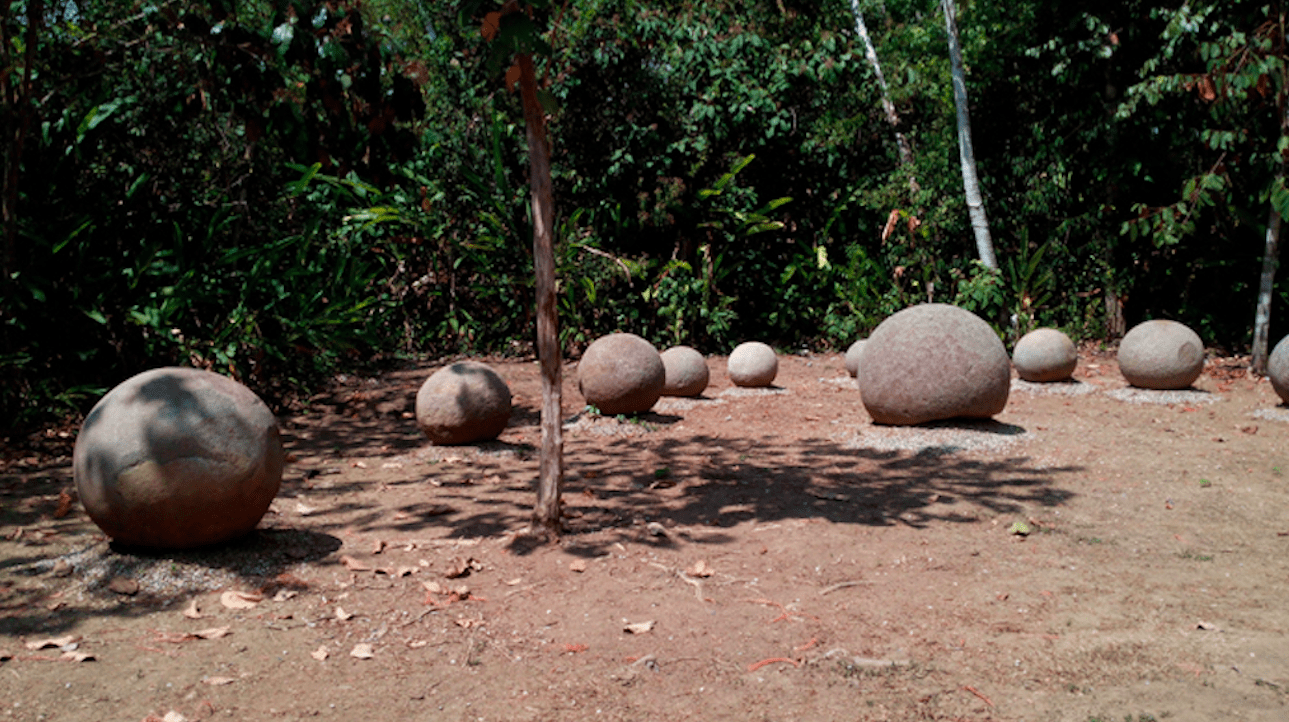
A few of the stone spheres were shipped as far as Isla del Caño, 17km off the coast. Their original positions and how they were transported in ancient times remains unknown. The wheel was not known to exist in the Americas until the Spanish arrived, nor were there beasts of burden.
While most archeologists believe the stones are the work of an ancient indigenous people, skeptics argue that primitive people could not have possibly crafted and transported these smooth round stones across long distances.
6) Olmec Heads / Gulf of Mexico
Found in the Tuxtlas Mountains the Colossal Olmec Stone Heads are carved from single blocks of volcanic rock called basalt and date from at least 900 BC. The Olmec heads range in height from 1.17 to 3.4 meters, or 3.8 to 11.2 ft and weigh between 6 and 50 tons, with the largest head left abandoned and unfinished. Some of these boulders were transported over 150 kilometers or 93 miles from the source of the stone.
The exact method of transport of these large masses of rock are unknown.
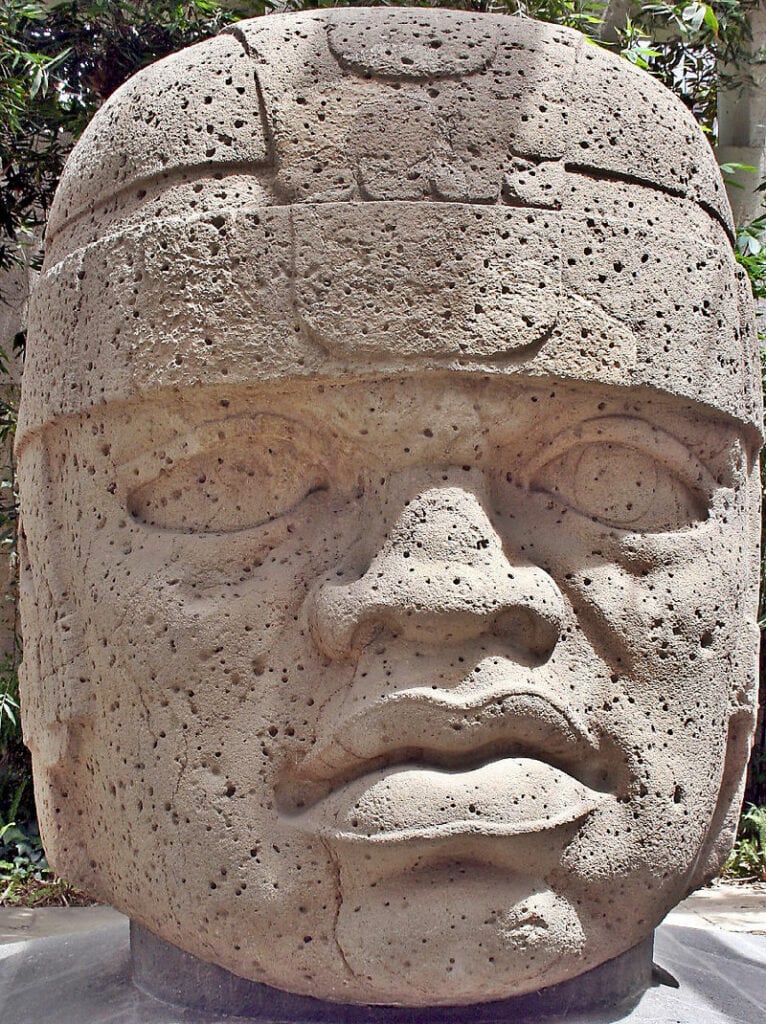
Seventeen confirmed examples are known from four sites within the Olmec heartland on the Gulf Coast of Mexico. Most colossal heads were sculpted from spherical boulders, but two from San Lorenzo Tenochtitlán were re-carved from massive stone thrones.
They stone heads are a distinctive feature of the Olmec civilization, one of the six cradles of civilization worldwide, including the Norte Chico culture of South America, the Erlitou culture of China’s Yellow River, the Indus Valley Civilization of the Indian subcontinent, the civilization of ancient Egypt in Africa, and the Sumerian civilization of ancient Iraq.
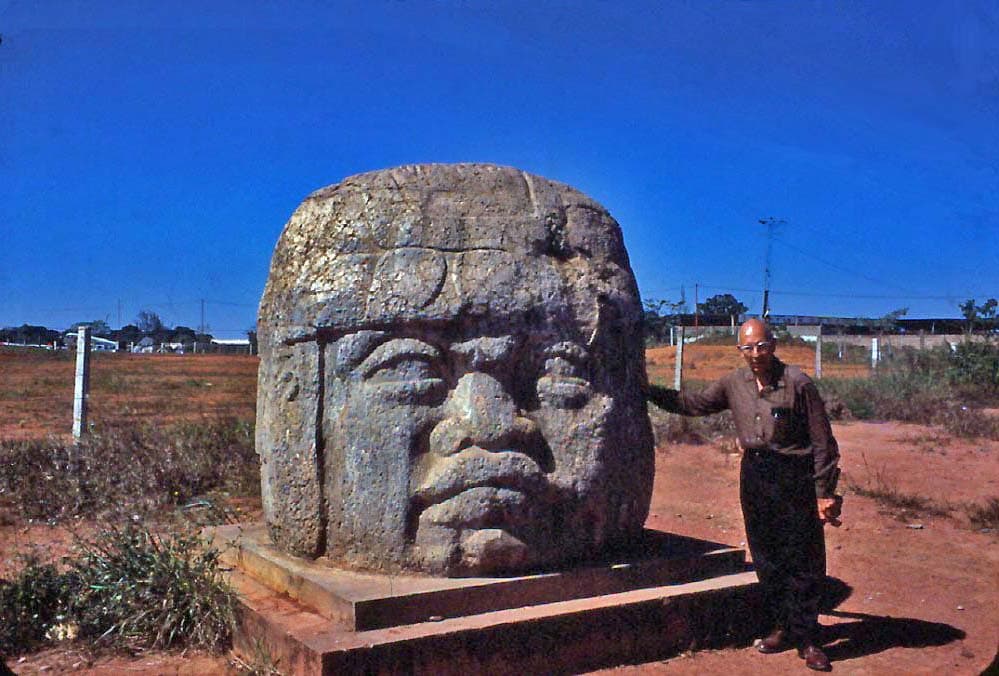
Early explorers claimed the Olmecs were of African descent, based primarily on their distinct facial features. The idea was first suggested by José Melgar, who discovered the first colossal head at Tres Zapotes in 1862 and published two papers attributing the heads to a “Negro race.” Modern proponents have gone a step further, including, Ivan Van Sertima and Clyde Ahmad Winters who trace the Olmecs to the Mandé people of West Africa.
Olmec cultural traits and technology were embraced and carried forward by the Amerindian peoples of Mesoamerica and South America, including a distinct form of pyramid building. Olmec style pyramids are characteristically wide in length and width, but short in height.
All major American Indian cultures, including those in the southern United States, engaged in a form of pyramid-mound building.
5) Monks Mound / East St. Louis

Though not made of stone, this megalithic earthen structure called Cahokia Mound, or Monks Mound, is by volume the fifth largest pyramidal monument in the world. Constructed and maintained prior to European colonization between, 900 and 1300 AD, it remains one of the largest pre-historic Native American settlements found in the United States.
Reaching more than 100 feet high, the elevated platform is believed to have served as the abode of the Cahokia rulers.
Cahokia had an estimated population of 20,000 and was once capital to a powerful, political and economic civilization called the Mississippian – their territory spreading throughout the Ohio and Mississippi valleys.
Most of the earthen mounds in the St. Louis metropolitan area have been destroyed, but fortunately some sections of “urban prairie” still remain. In and around the East St. Louis corn and soybean fields, truck stops, strip clubs, semi-rural businesses and vacant buildings covered with overgrown vegetation, seven of the 50 known mounds are still visible.
Megalithic adventure seekers beware: In 2013, East St. Louis had the highest per capita homicide rate of any city in the United States.
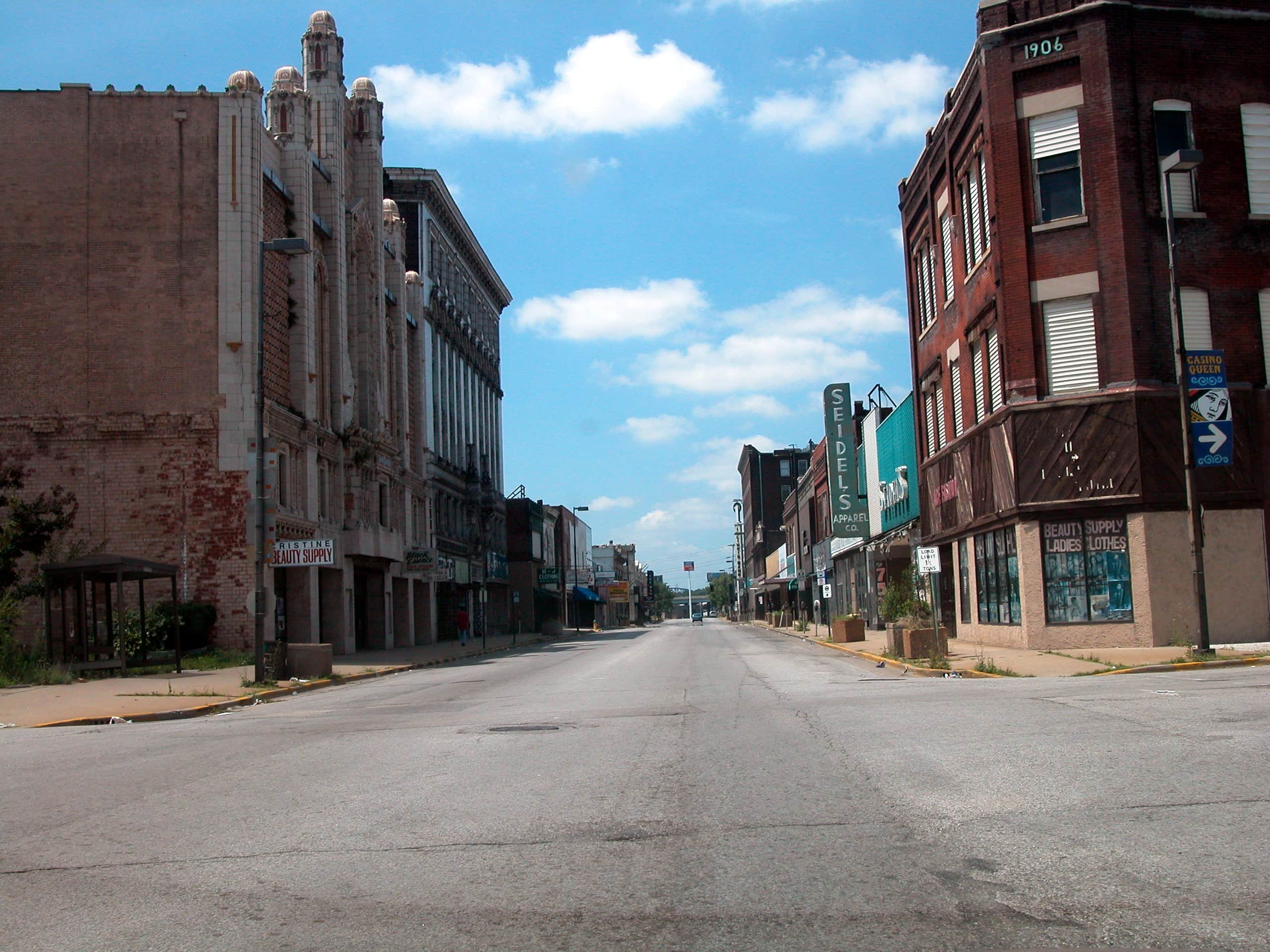
4) Great Serpent Mound / Ohio
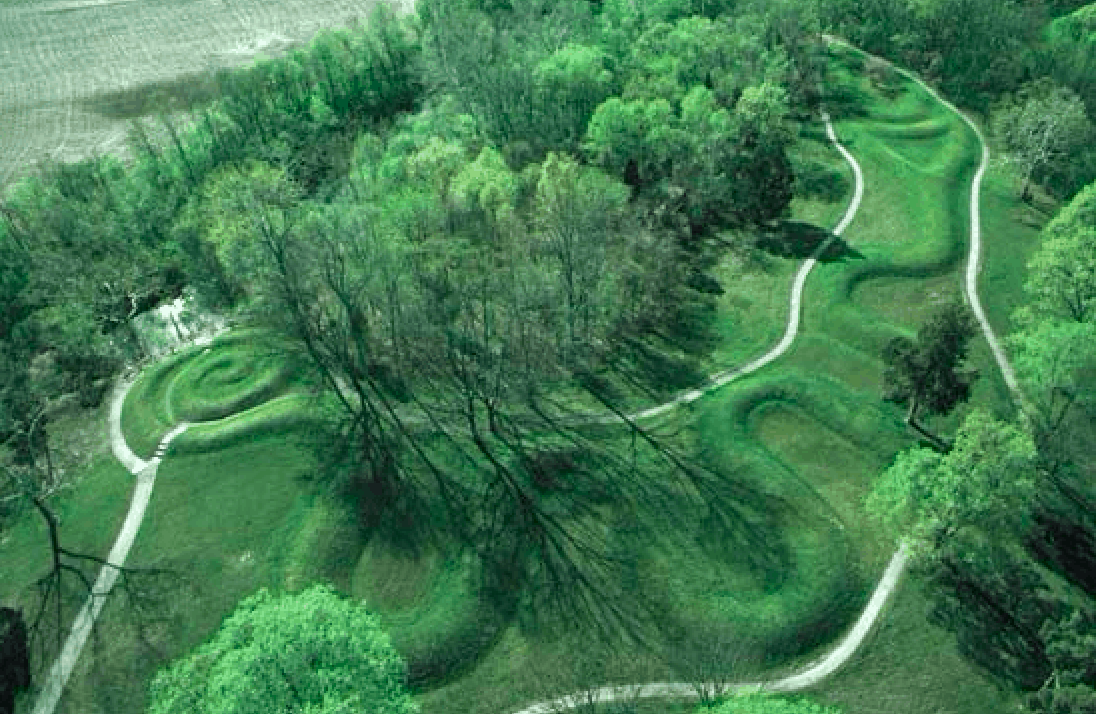
Serpent Mound is the largest serpent effigy in the world. This 1,348-footlong, three-foot-high prehistoric effigy mound was first reported in surveys by Ephraim Squire and Edwin Davis in their historic volume Ancient Monuments of the Mississippi Valley, published in 1848 by the Smithsonian Museum.
The mound is located on a meteorite impact structure known as the Serpent Mound Crater in an area along Ohio Brush Creek in Adams County, Ohio. The topographic expression of this impact crater has been completely erased by erosion but still detectable in the pattern of disruption that lifted the sedimentary strata several hundred feet.
Archaeologists are still debating the origin of the geoglyph. Serpent Mound contains no artifacts and no burials that would help establish the age of the mound. No writing system or stone architecture from Mississippians are known to exist.
3) Moai / Easter Island
The megalithic stone heads known by the native Rapa Nui people, as “Moai”, are located on Easter Island off the coast of Chile in the South Pacific. The heads have remained a mystery from the time Europeans first arrived on the island in the 1700s.
The latest discovery of full-length torsos buried beneath the surface has only added to the mystery.
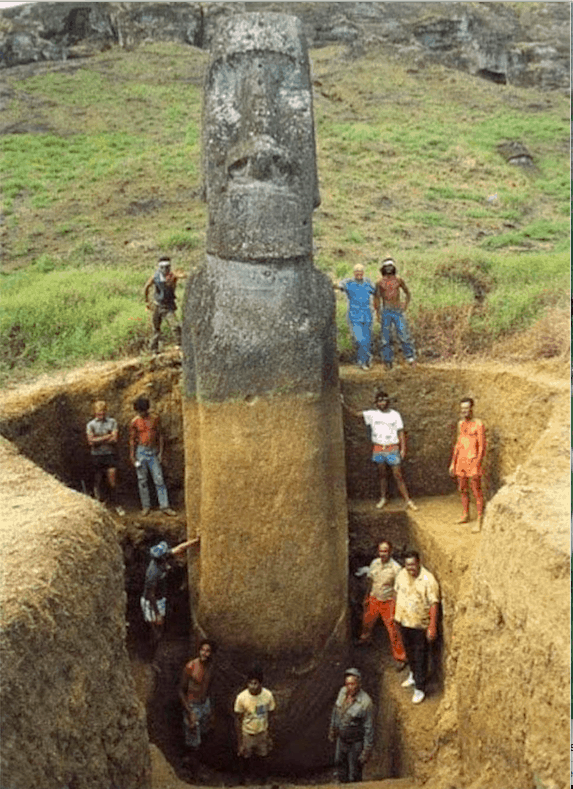
The volcanic rock made of basalt and andesite were the primary stones used for carving. It has been proposed that ancient sculptors poured water on the volcanic rock to soften it for carving. Basalt and andesite rock are rated 5 to 6.5 on the Mohs scale of mineral hardness, it would take more than poured water to soften and mold these stones.
How were theses giant monoliths, carved from single stone blocks, moved across the island?
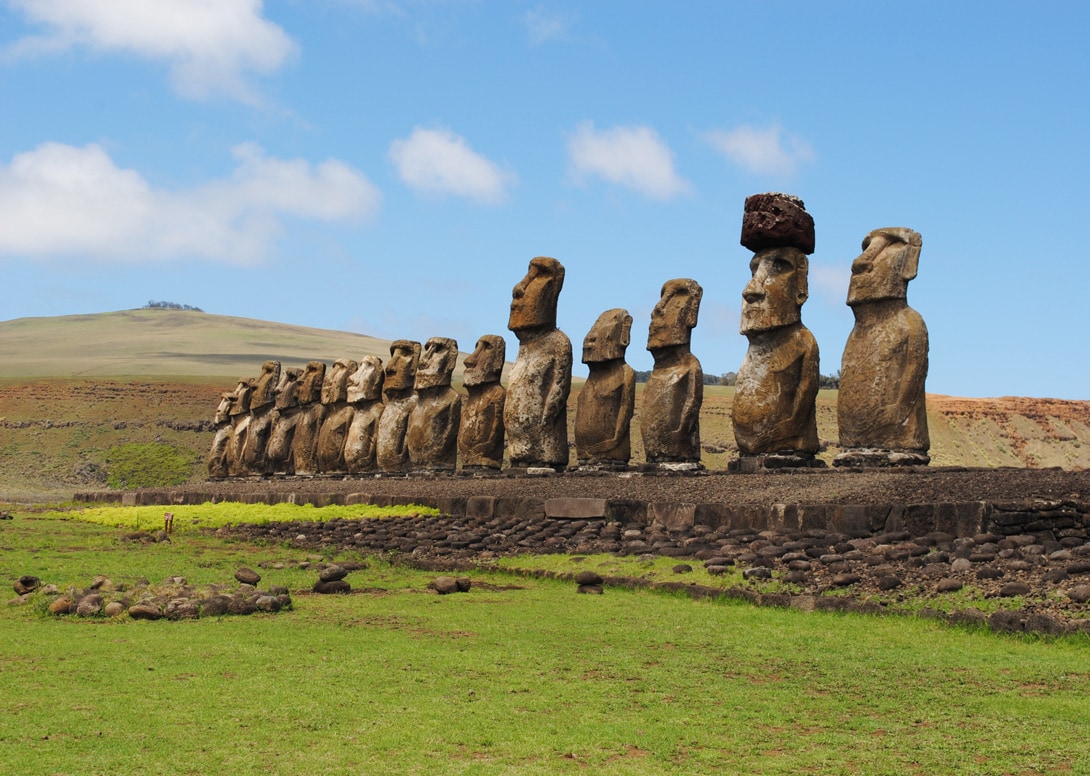
In October 2012, researchers came up with a “walking” theory where a 5-ton replica Moai was moved successfully by a team of researchers, using ropes to rock it forward in an upright position.
Notwithstanding, the largest Moai statue measures 32 feet in height and weighs close to 82 tons.
If the statues were walked into place it could dismantle the theory proposed by archaeologists that Rapa Nui people destroyed their environment, by cutting down the island’s trees to used them as rollers to transport the gigantic stone statues.
But it is also not clear whether the “walking” method would work for much larger stones, or how they could be walked upright on the island’s hilly, rough terrain. The ground the researchers used was as flat as an airport runway.
Angkor / Siem Reap, Cambodia
The majestic sandstone megaliths of Angkor are a testimony to the Khmer Empire’s mystical power and ancient architectural mastery. For centuries the lost city existed only as myth, until it was rediscovered in 1861 by the French naturalist, Henri Mouhot.

The name Angkor Wat translates to “temple city” in the Khmer language. Although originally constructed as a Hindu temple, it was gradually transformed to a Buddhist temple towards the end of the 12th century.
The founding myth claims that a Zhenla nobleman, after a long stay at the Central Javanese court of Indonesia, returned to the mainland to establish the Khmer Empire of Cambodia. He took the name of Jayavarman II and built the capital in what he called “the mountain of the king of the gods.”
In Khmer Cambodia, as in ancient Java, the devaraja (god-king) cult embodied the belief that the living king transmitted his divinity through his relationship with god.
Expressed in the indian traditions and Indian iconography that dominates Southeast Asian architecture and bas-reliefs.
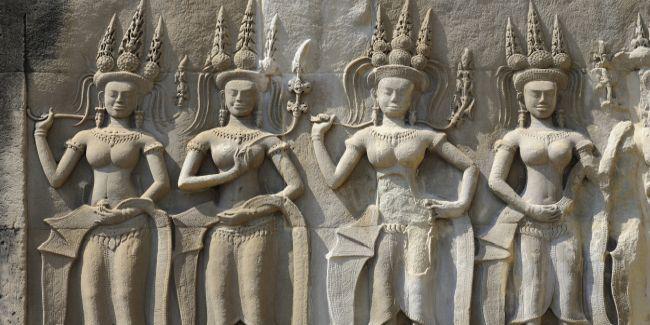
2) Angkor Tom

The giant stone faces that appear on Temple of Angkor Tom at Bayon are believed to be the face of Jayavarman II himself

1) Angkor Wat

Originally built in the first half of the 12th century, it spreads across more than 400 acres and is considered the world’s largest religious complex.
The temple is comprised of 5 million to 10 million sandstone blocks weighing a maximum weight of 1.5 tons each.

The central tower of Angkor Wat aligns directly with the morning sun during the Equinox.

The central tower represents the legendary Mount Meru, the center of the the physical, metaphysical and spiritual universes and the residence of the Hindu gods.
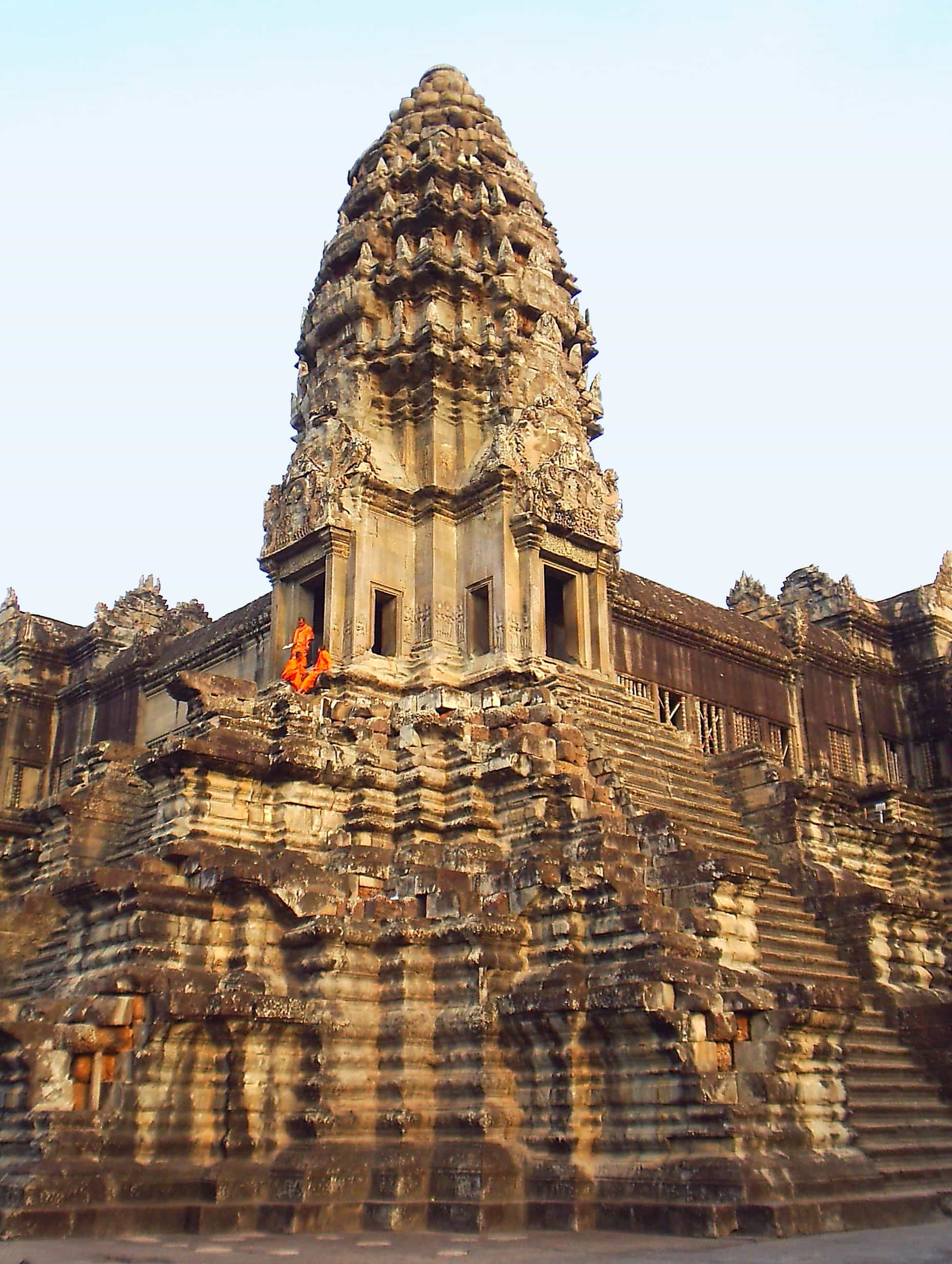
The Angkor spires are believed to be depictions of the lotus flower – representing the flower of life pattern found within awakened beings and located in the pineal gland, also known as the Third Eye. The pinecone shaped spires represent the flower of the higher chakras – specifically the 6th chakra.
In the 1,000-year history of Khmer art, not one single name of an artist or sculptor was ever recorded.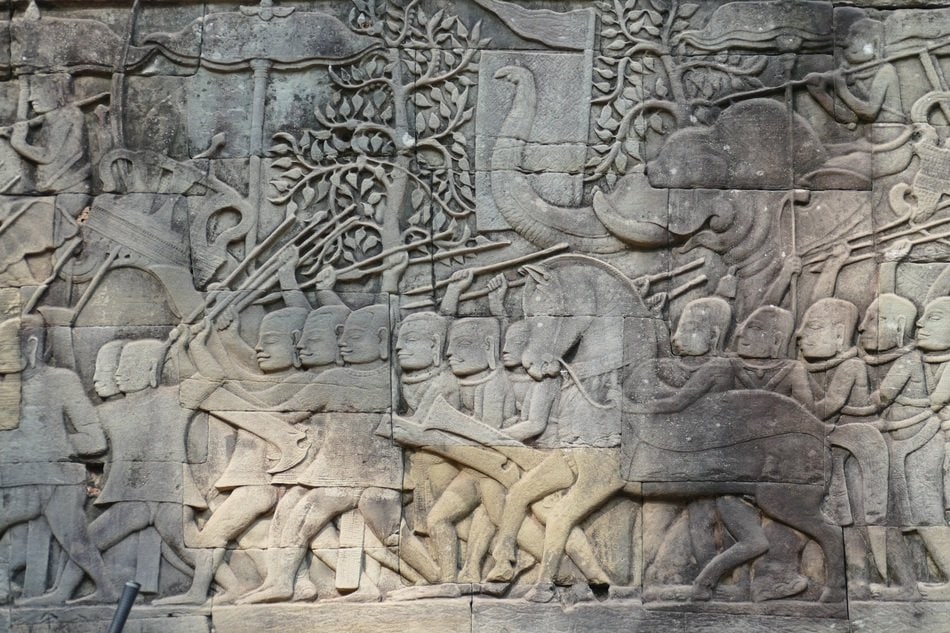
Virtually all of Angkor Wat’s surfaces, columns, lintels and roofs are carved. Khmer artwork includes images of Buddha, Shiva, Brahma, Vishnu, Nagas and more than 3000 apsaras, or heavenly nymphs, each of them unique. The gallery walls are decorated with nearly 1,000 square meters of bas-reliefs with the inner walls bearing a series of large-scale scenes mainly depicting episodes from the Hindu epics the Ramayana and the Mahabharata.
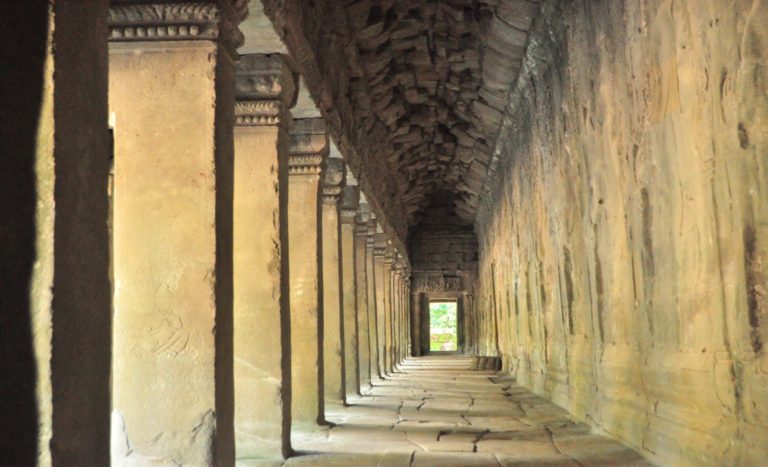
**********
If you find this content interesting, please drop us a line, comment in the comment section below or consider sharing on social media. We encourage you to question everything and do your own research.
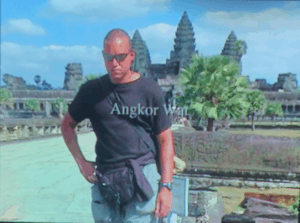
Terry Nelson is a freelance writer and adventure traveller with a degree in Journalism from the University of North Carolina at Chapel Hill.
